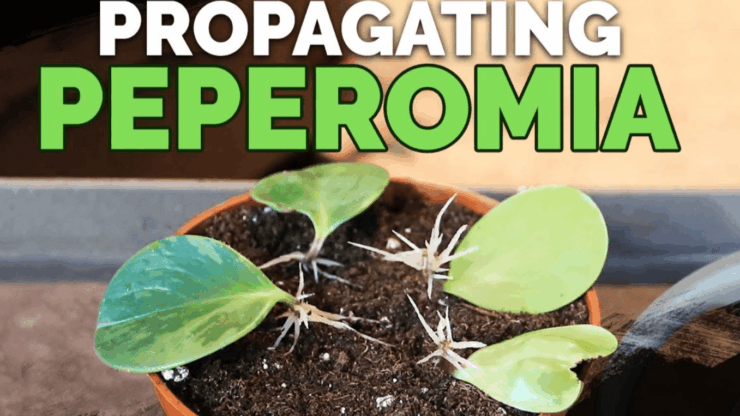Peperomia is a beloved houseplant, admired for its compact size, attractive foliage, and easy-care nature. If you already have one and want to multiply your collection without buying new plants, propagating Peperomia is the perfect solution. Not only is it cost-effective, but it’s also a rewarding way to expand your indoor jungle.
In this guide, we’ll walk you through the best methods to propagate Peperomia, explain the tools and materials you’ll need, and share tips to ensure your new plants thrive.
What Is Peperomia?
Before diving into propagation, it helps to understand what Peperomia is. This genus includes over 1,000 species, many of which make excellent houseplants due to their vibrant leaves and tolerance for indoor conditions. Most Peperomia are small, slow-growing plants with thick, fleshy leaves that store water — making them somewhat drought-tolerant.
Common Peperomia varieties include Peperomia obtusifolia (baby rubber plant), Peperomia argyreia (watermelon peperomia), and Peperomia caperata (emerald ripple).
Why Propagate Peperomia?
Propagating your Peperomia plants allows you to:
- Create new plants for your home or gifts for friends
- Replace any plants lost to damage or illness
- Share your love for gardening and houseplants
Plus, propagation is an easy way to keep your plant collection fresh and exciting.
When to Propagate Peperomia
The best time to propagate Peperomia is during its active growing season, typically spring and summer. During these warmer months, plants are more vigorous and heal faster, improving your chances of successful propagation.
3 Methods to Propagate Peperomia
There are three common ways to propagate Peperomia:
- Stem Cuttings
- Leaf Cuttings
- Division
Let’s explore each method one by one.
1. Propagating Peperomia Using Stem Cuttings
Stem cuttings are the most popular method because they root quickly and easily.
Materials Needed:
- Sharp, clean scissors or pruning shears
- Small pots or containers
- Well-draining potting mix (cactus or succulent mix works well)
- Optional: rooting hormone
Steps:
- Select a Healthy Stem: Choose a healthy, mature Peperomia stem with several leaves on it.
- Make the Cutting: Using clean scissors, cut a 3-4 inch piece just below a leaf node (where leaves attach to the stem).
- Remove Lower Leaves: Strip off the leaves on the lower half of the cutting to expose the nodes.
- Optional – Apply Rooting Hormone: Dip the cut end into rooting hormone to encourage faster root growth.
- Plant the Cutting: Insert the cutting into moist potting mix. Make sure at least one node is buried in the soil.
- Provide Proper Conditions: Place the pot in bright, indirect light and maintain consistent moisture (not soggy).
- Wait for Roots to Develop: Roots typically form in 3-6 weeks. Gently tug the cutting after a few weeks to check for resistance, indicating root growth.
2. Propagating Peperomia Using Leaf Cuttings
Leaf cuttings are a fun way to propagate and can be especially useful for Peperomia varieties with thick leaves.
Materials Needed:
- Healthy Peperomia leaf
- Sharp knife or scissors
- Potting mix
- Small container or tray
Steps:
- Choose a Healthy Leaf: Select a firm, mature leaf.
- Cut the Leaf: You can either propagate the whole leaf with its petiole (leaf stem) attached or cut the leaf into sections, making sure each has a main vein.
- Prepare the Leaf Sections: If cutting into pieces, each section should have part of a vein.
- Plant the Leaf or Sections: Insert the petiole or leaf sections vertically into moist potting soil.
- Maintain Moisture: Keep the soil slightly moist and place the container in indirect sunlight.
- Be Patient: New plants can take 4-8 weeks to emerge from the leaf base or sections.
3. Propagating Peperomia by Division
Division is ideal for Peperomia plants that have grown large or have multiple stems.
Materials Needed:
- Entire Peperomia plant
- Clean knife or hands
- New pots
- Fresh potting mix
Steps:
- Remove the Plant: Gently take the plant out of its pot.
- Separate the Root Ball: Carefully tease apart the root ball into smaller sections, ensuring each division has roots and stems.
- Plant Each Division: Place each section in its own pot with fresh potting mix.
- Water and Care: Water lightly and provide bright, indirect light.
- Watch It Grow: The divisions should establish new growth within a few weeks.
Tips for Successful Peperomia Propagation
- Use Clean Tools: Always sterilize scissors or knives to prevent disease transmission.
- Avoid Overwatering: Peperomia plants dislike soggy soil, which can cause rot. Keep the soil moist but not wet.
- Maintain Humidity: A humid environment encourages rooting. Consider placing a plastic bag loosely over cuttings or using a humidity tray.
- Be Patient: Some Peperomia varieties root quickly, while others take more time—don’t give up!
- Provide Bright, Indirect Light: Too much direct sun can scorch cuttings, while too little light slows growth.
Troubleshooting Common Problems
- Cuttings Rotting: Likely from overwatering or poor drainage. Ensure your potting mix drains well and avoid waterlogging.
- No Root Growth: Check that you buried a node, and keep the soil moist and warm.
- Leaves Wilting: Could mean underwatering or too much sun. Adjust care accordingly.
FAQs
Can you propagate peperomia?
Yes, peperomia is easy to propagate using stem cuttings, leaf cuttings, or division.
Is peperomia a succulent?
Peperomia is not a true succulent, but many varieties have thick, fleshy leaves that store water.
Is peperomia toxic to pets?
No, peperomia is non-toxic and safe for pets like cats and dogs.
How long does it take for Peperomia to root in water?
Peperomia cuttings usually root in water within 2 to 4 weeks.
How can I make my Peperomia grow faster?
Provide bright, indirect light, keep soil moist (not soggy), and feed with balanced fertilizer during growing season.
Can peperomia grow in shade?
Peperomia can tolerate low light but grows best in bright, indirect light; too much shade may slow growth.
Conclusion
Propagating Peperomia is a simple and enjoyable way to multiply your plants, save money, and deepen your connection with your greenery. Whether you use stem cuttings, leaf cuttings, or division, the process is beginner-friendly and highly rewarding.
Try experimenting with different methods to see which works best for you and your specific Peperomia variety. With patience and care, you’ll soon have a thriving collection of these charming houseplants filling your space with life and color.






